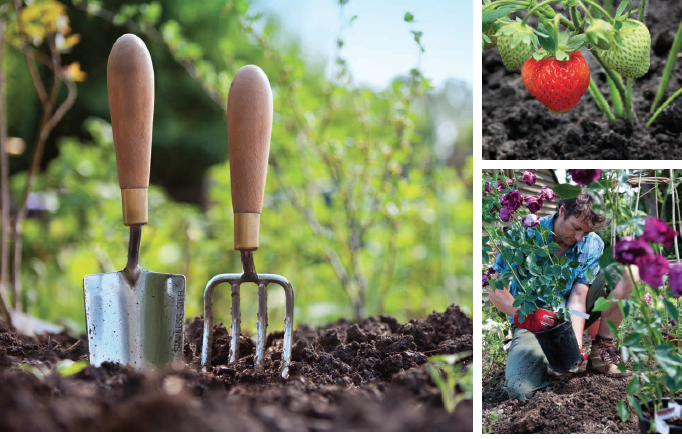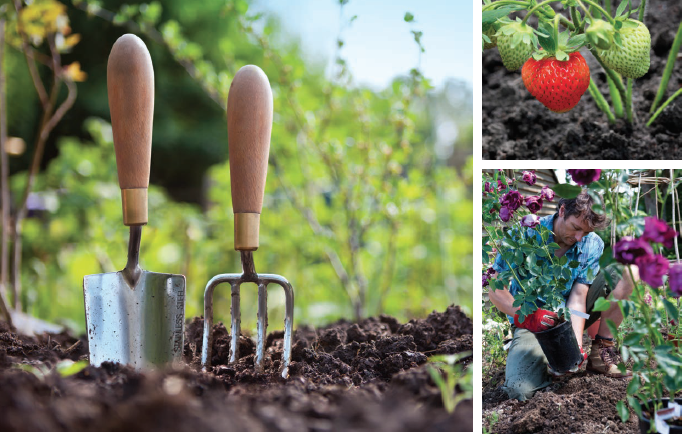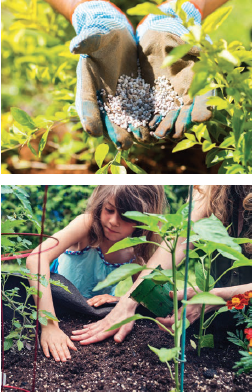The Secret’s in the Soil | Take the Guesswork out of Gardening by Doing a Soil Test


When you head to the local lawn and garden center to find a cure for your under-performing yard or wimpy flower or vegetable gardens, the shelves full of products that promise to nurse them back to health can be a bit overwhelming. Labels advertise “fertilizer,” “turf builder,” and “plant food,” and a mere glance at the list of ingredients can baffle an unexperienced gardener—especially if you never paid attention in chemistry class. You hope there’s a product that will help your finicky fescue or droopy daisies, but choosing the right one is a challenge. Sure, you could research it first, but odds are you’ll just resort to the trial-and-error method and haul home product after product until you start to see some success—or until you do more damage and make a desperate call to a professional.
The truth is that when doctors learn more about the patient they’re treating, they prescribe the most effective medication. That’s why it’s a good idea to test your soil instead of playing the guessing game. You will get the diagnosis you’re looking for and the right healing regimen to follow.
The dirt on pH
Like any living thing, plants need nutrients. As complex organisms, each type of plant requires specific nutrients at specific levels. For the soil to be soluble enough for the roots to take up the nutrients, it must have the proper pH level. If you’re not an experienced gardener, you may have only heard about pH when it comes to swimming pools or buying deodorant. There’s so much more science behind the “power (p) of Hydrogen (H),” but a basic explanation is that pH, tested on a scale of 0-14, indicates the acidity level of your soil. If the level is out of whack, your soil may be locking out the nutrients that are essential to survival.
The lower the pH, the more acidic (or sour) the soil is and the more trouble roots have absorbing the nutrients. Very acidic soils (under 5) will not respond well to many herbicides, and toxic levels of aluminum in this range can limit plant growth. The higher the pH, the more alkaline (or sweet) the soil is and the more that the plant nutrient molybdenum, for example, is available. Micronutrients such as manganese and zinc, can also become toxic to plants at this level.
Most plants prefer the slightly acidic range (between 6 and 7).
This is where the largest number of nutrients become most available to plants, with easier uptake. It is also in this range where earthworms and microorganisms like to hang out, which can benefit your soil.
There are countless plant pH preference charts available online (try almanac.com or gardensimply.com). On the low end of the scale (more acidic), you will find gardenia, blueberry, strawberry, azalea, rhododendron, and ivy, to name a few—all preferring pH levels of 4.5 to 5.5. On the opposite end, you will find carnation, clematis, peony, plum, sumac, and sunflower, from levels of 7 to 7.5.
Test it out
When your plants look distressed and you’re just not having any luck with your watering or random fertilizer pick, the problem could very well be the pH level. But to know this for sure, you can order a soil test. Lawn and garden centers sell home soil pH kits, but if you’ve never tested your soil, it may be best to trust the experts. Some lawn care companies offer the service, or you could order tests through a program offered by the Virginia Cooperative Extension Office, which utilizes the Virginia Tech Soil Testing Lab. Affiliated with the research function of the university, the state-of-the-art lab has been conducting soil tests for farmers and homeowners for nearly 80 years. The Blacksburg laboratory conducts tests on over 50,000 samples each year. How it works: Pick up a form and special box from the local extension office (in Lynchburg, for example, it is located at 2704 Concord Turnpike) and mail it in with $10 (plus shipping). The form gives instructions on how to take and prepare a soil sample (the best time is when the soil is not too wet and not too dry). You can fill out what plants you intend to grow in the area where the soil is being tested. Once at the lab, the sample will run through a sophisticated pH analyzer machine and a computer will generate results, usually received in about three days. You can have the results delivered via email. (Download forms from soiltest.vt.edu, where you can also view sample reports and learn more about the testing process).
 A balancing act
A balancing act
At the Virginia Tech lab, a routine soil test package includes analysis of soil pH and nine elements (here’s where you have to flash back to high school chemistry: P, K, Ca, Mg, Zn, Mn, Cu, Fe, and B). If the amount of elements is off, the pH level is affected. In the case where your pH is too high or too low, the report will give recommendations for adjusting it by using the right ratios of lime (to raise it) or sulfur (to lower it). According to the lab, more than a third of garden samples tested have too much lime, creating an alkaline soil where nutrients are insufficient for plant growth. The soil pH levels will naturally drop over time, so lime application will eventually become necessary. That’s why lab staff recommend staying ahead of the game by ordering a soil test every few years. They also warn against applying too much lime. The report will give specific recommendations to balance the lime amounts and information on how and when to apply it so you don’t do more damage. The report will also give fertilizer recommendations.
It is a good idea to follow up the results with a call to your local extension office (the form always includes contact information for the closest office) where someone can walk you through the results, especially if it is your first time. The office’s network of master gardeners is on hand for support. They can even give you tips on how to apply the lime, sulfur or fertilizer.
Conducting a soil test can certainly save you time, money and headaches in the long run. If you can trust the dirt doctors and follow their advice, your soil can be on the mend—and your plants will thank you for it.
diy gardening, garden soil, gardening, how to garden, senior living, senior living issue






